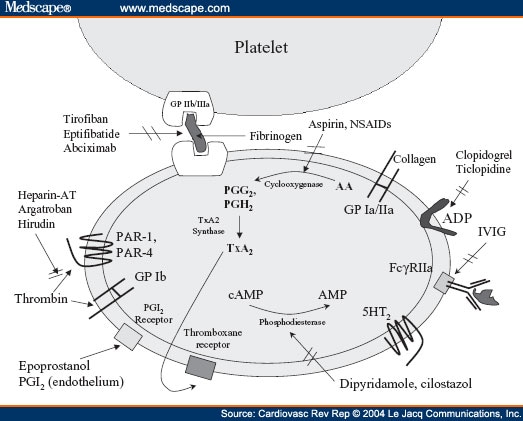
Thromboxane A2 (TXA2) produced by activated platelets stimulates activation of new platelets and increases platelet aggregation by mediating expression of GP IIb/IIIa in the cell membrane of platelets.
Circulating fibrinogen binds to GP IIb/IIIa receptors causing aggregation.
Thrombin converts fibrinogen to fibrin which is cross linked by factor XIII to form a clot.
Aspirin inhibits prostaglandin formation which leads to TXA2 inhibition.
Clopidrogel which is a prodrug activated by CYP2C19 irreversitly inhibits P2Y12 and ADP receptors which blocks the activation of GP IIb/IIIa receptors to bind with fibrinogen.
cAMP inhibits platelet activation by decreasing cytosolic levels of calcium and, by doing so, inhibits the release of granules that would lead to activation of additional platelets and the coagulation cascade.
